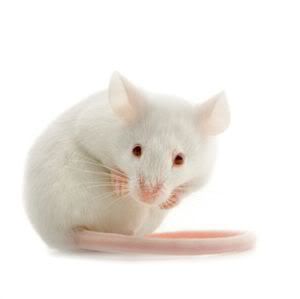- Back to Home »
- Science , University Life »
- Can Cancer Be Cured by 2015?
Posted by : Konstantine
Tuesday, April 14, 2009
So I have my final examination this morning in the subject of cell transformation, better known as cancer. The final is worth a whopping 40% and is based on subject matter presented by the roughly 25 students enrolled in the class over the past two months, including my own presentation on the effects of the Chernobyl nuclear accident.
You can pretty much stop reading here. The rest of this post unnecessarily goes into summarizing one of the essay questions I will be writing today and basically serves as a rough draft.
One of the central questions to be addressed by the examination was given to us, along with a review paper, ahead of time: can cancer be cured by the year 2015? This extremely engaging question pretty much tests your knowledge on the subject of the course and asks for a conclusion to be made from your understandings of the underlying mechanisms surrounding the many types of cancers, carcinogens, environmental factors etc. associated with carcinogenesis.
I will do my best to posit that cancer will not be 'cured' as a whole come 2015, but will morph into a controllable illness sometime in the near future, with which afflicted individuals will learn to live much like diabetes sufferers. The vast amounts of cell regulatory pathways that play a role in giving rise to a cancer within humans is the central reason for which I believe a cure is not likely; there is always another undiscovered or overlooked signaling pathways through which cellular mechanisms can be hijacked and used to transform regular cells into cancerous ones.
The paper mentioned above highlighted some of the pathways through which current technology aims to fight cancer; through cancer-specific agents, selective combinations and tissue-selective therapy.
Cancer-specific agents aim to target cancerous cells directly, through their cellular abnormalities, to selectively kill them. The discovery of abnormal cellular pathways being directly related to a particular cancer yields the possibility of targeted therapy that exploits this exclusivity. Gleevec is a model example of this, with its targeting of a philadelphia chromosome abnormality, the BCR-Abl protein, to prohibit it from acting as an agent that promotes cellular division specifically in cancerous growths.
Selective combinations use universally cytotoxic elements with selective agents to target cells within the body that are again exhibiting abnormal cellular activity. The main example being the administration of DOX, UCN-01 and the cytotoxic agent PTX in an attempt to eliminate all cells incapable of reacting to the former two's effects in normal cells in relation to tumor suppression protein activity.
Tissue-specific cancer treatment aims to exploit the innate differences of differentiated cell types; for instance, exhibiting a myriad of different surface proteins directly associated with specific tissue types. In essence, all cancers have a direct tissue origin that can be exploited. Rituximab, an antibody based therapeutic agent, targets CD20, a specific cell surface marker present on both cancerous and normal B cells within the body; this binding is associated with marked increase of apoptosis of these cells through as of yet unclear reasons. Tissue-specific antibodies can also be used with the aid of radioimmunotherapy to selectively destroy marked cells.
Each of these therapies are entirely open to new discoveries that will undoubtedly strengthen their ability to target and eradicate particular cancerous cells; however, each of these therapies is also marked with the deficiency of selecting for cells that circumvent the targeted treatment and thus give rise to even more resistant forms of cancer upon treatment. It is for this reason that these strategies must be used in conjunction with each other, either in series or, if allowable, together, to rid the body of as many cancerous cells as possible. The idea of using opposite therapies to rid of the selected resistant cells of the previous modality is a necessary step that will lead to eventual regression of the cancer, or a continued opposite therapy schedule that will suppress the cancer indefinitely. In this way, cancer will become a chronic illness with which patients will be able to cope in a relatively non-invasive fashion, akin to patients having to deal with diabetes.
Shot in the dark? I give it until 2020 to see these kinds of results.










